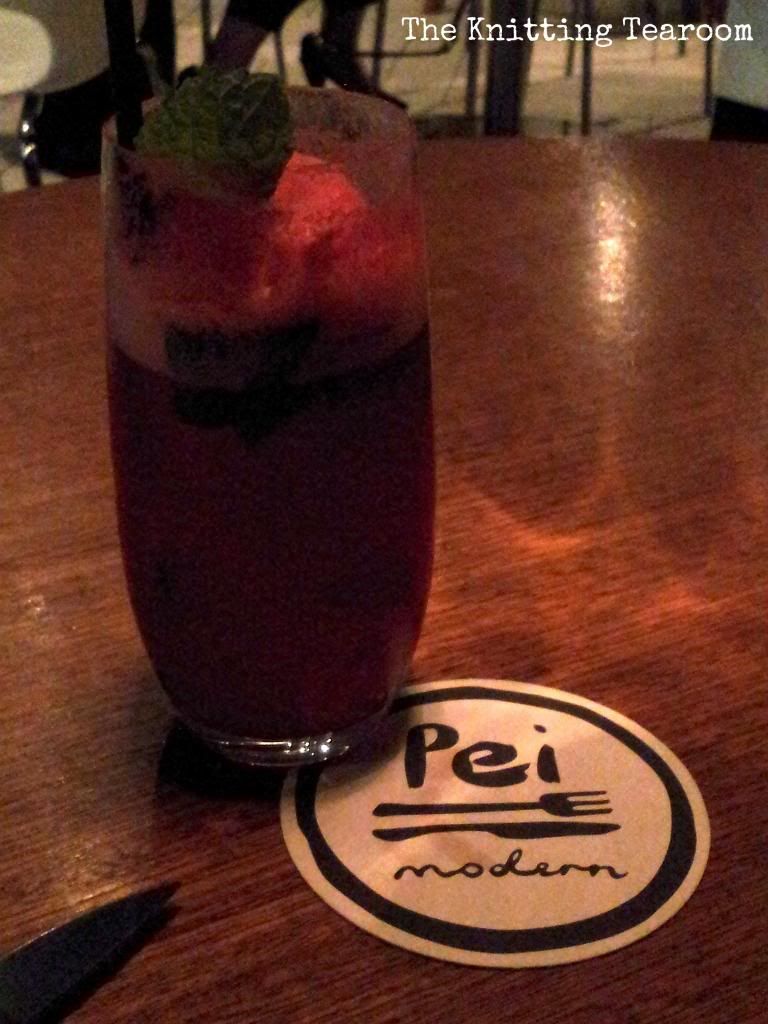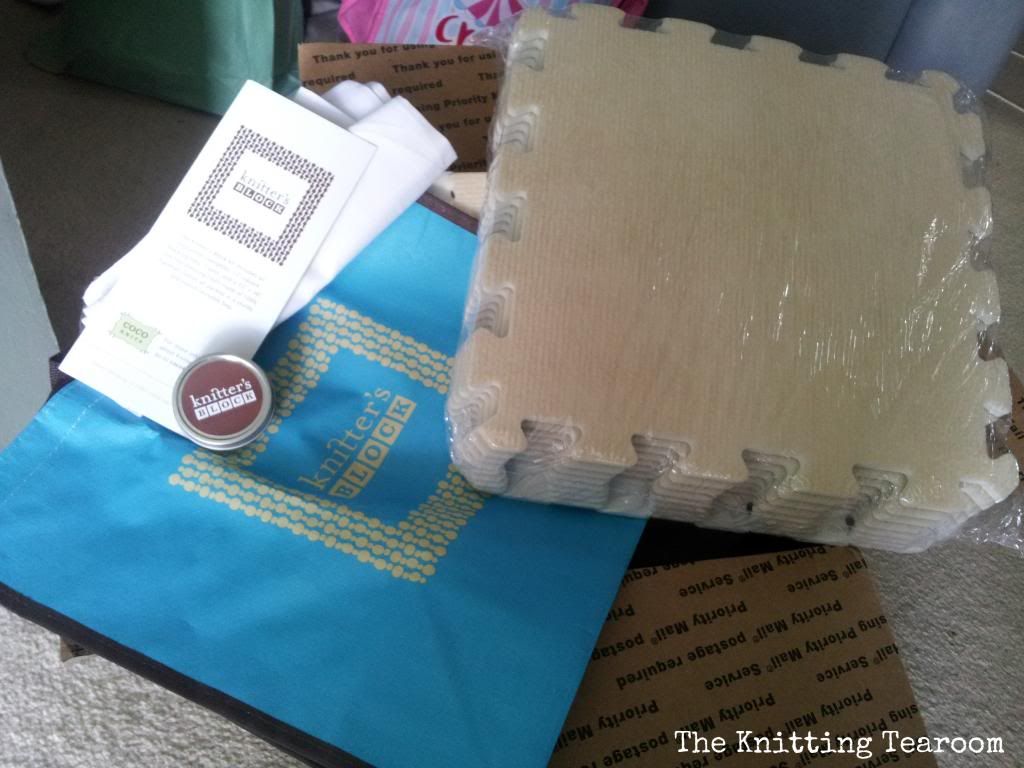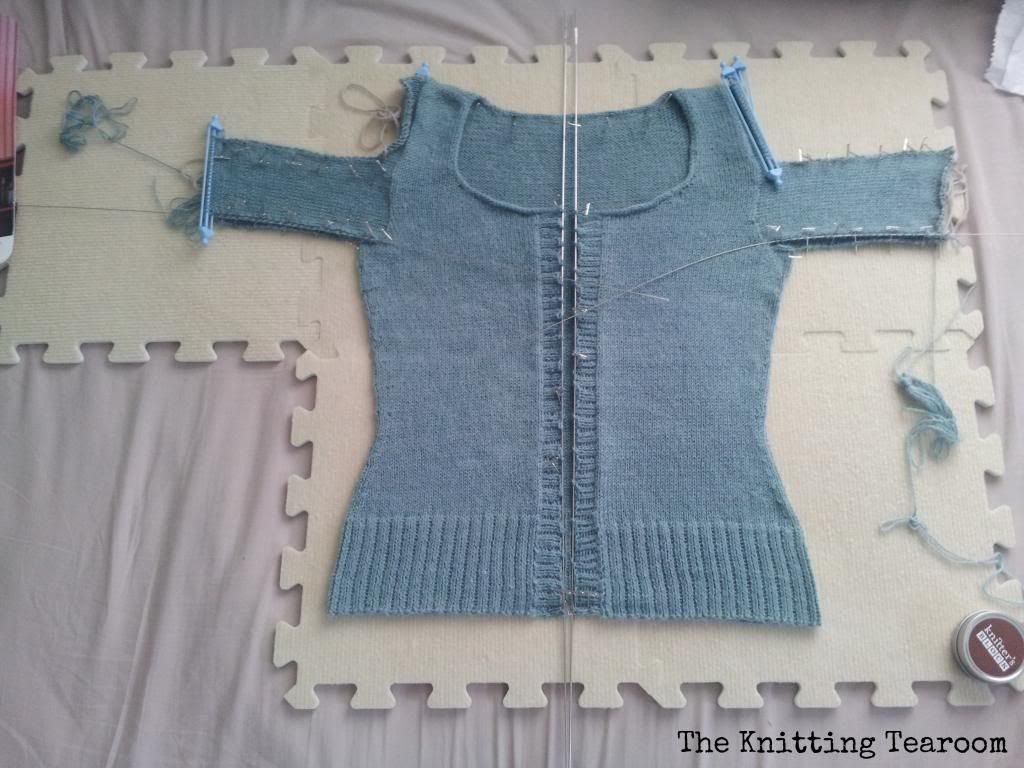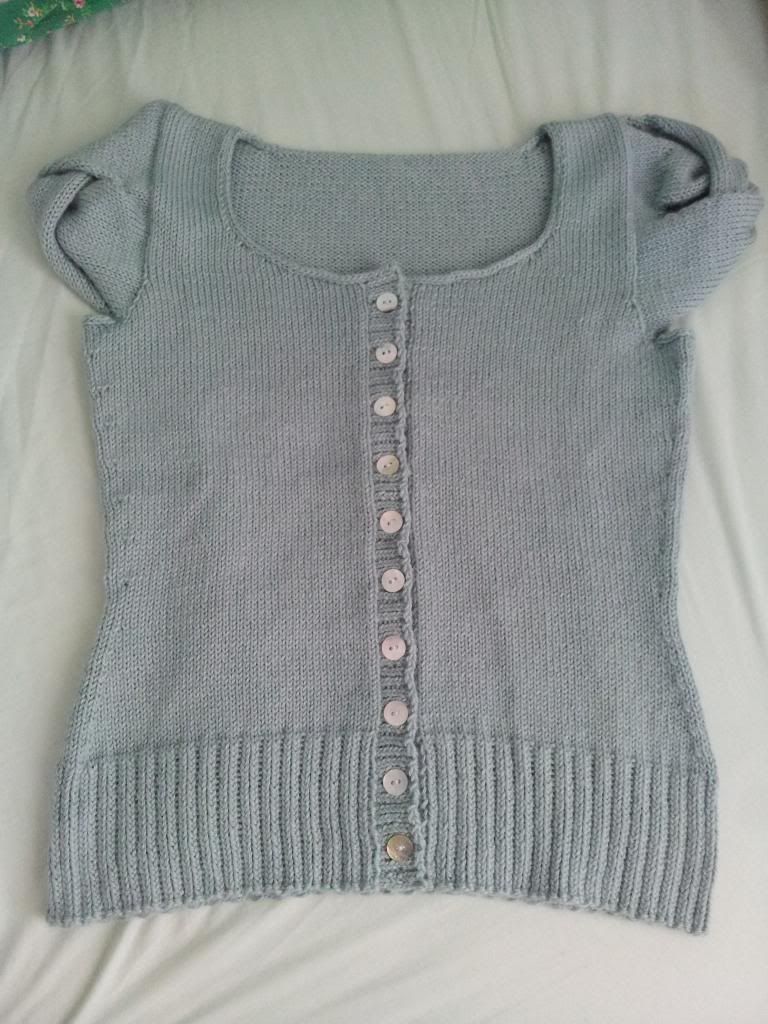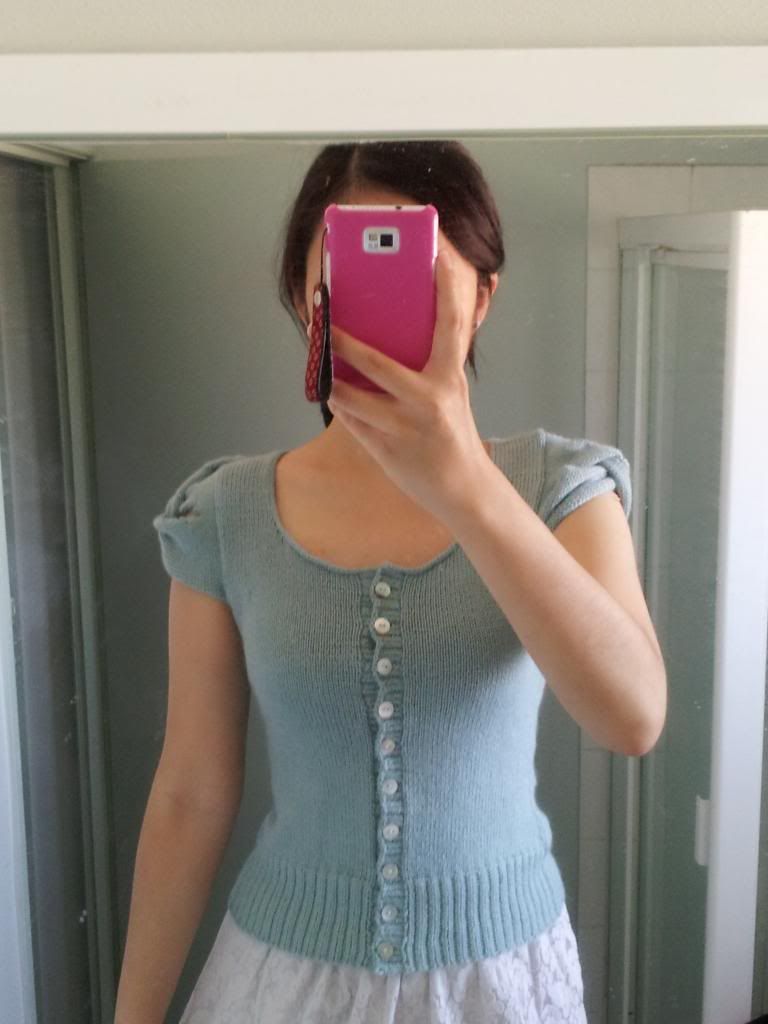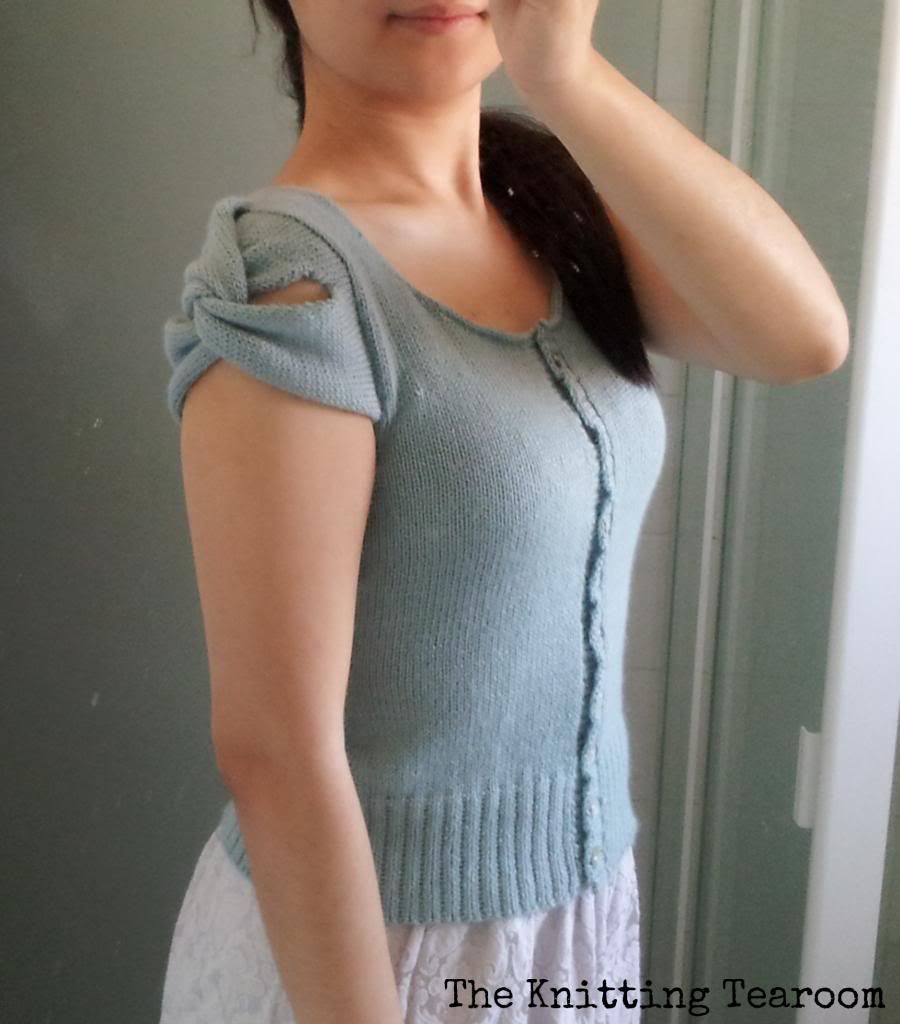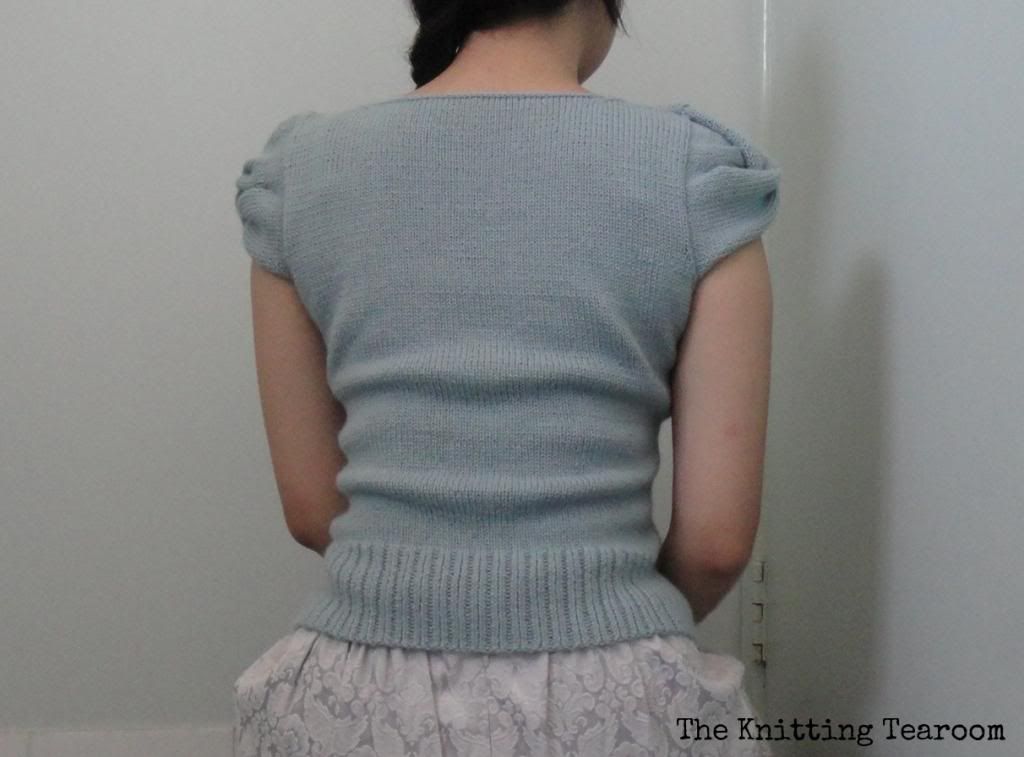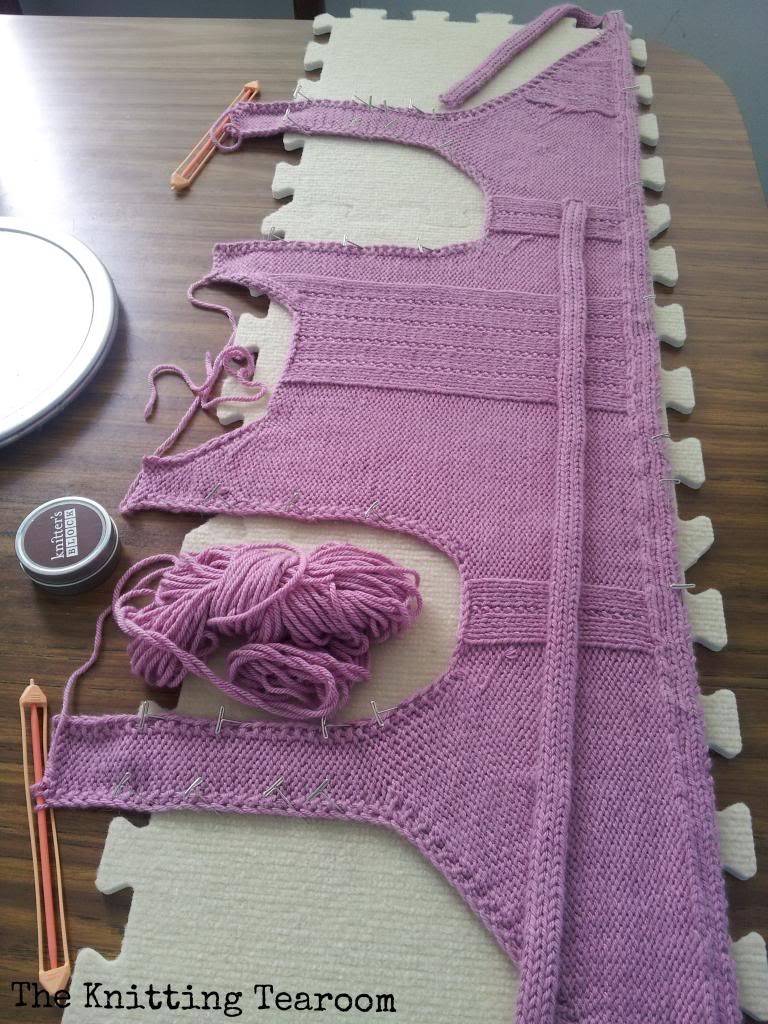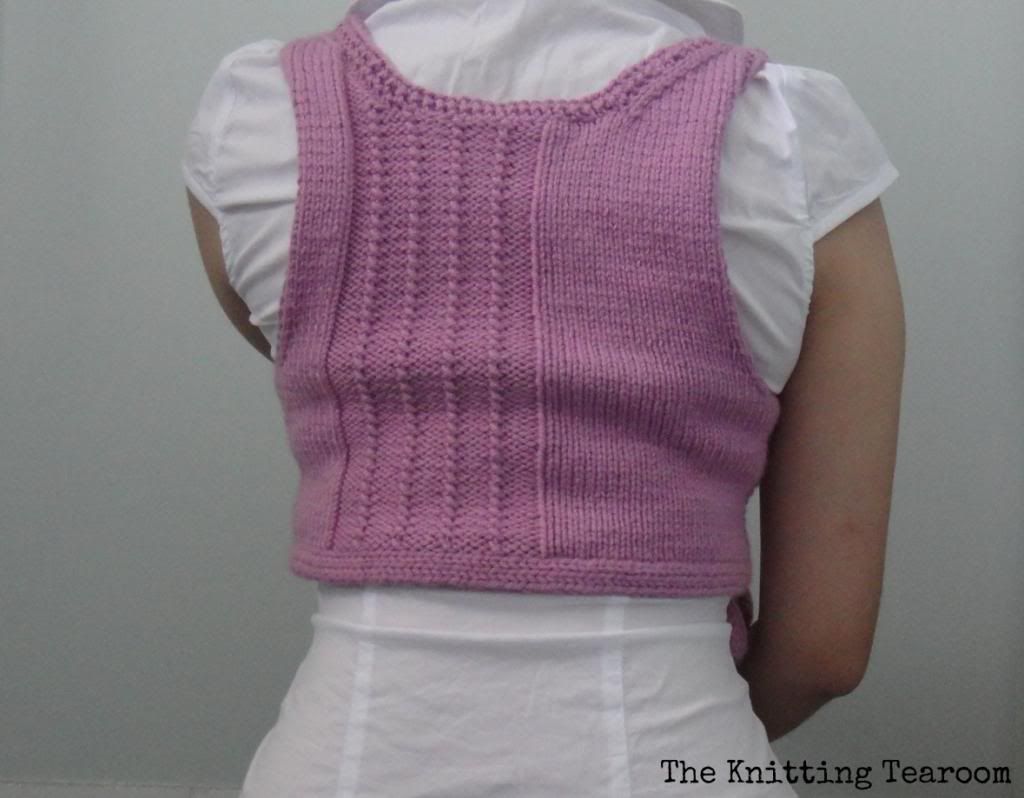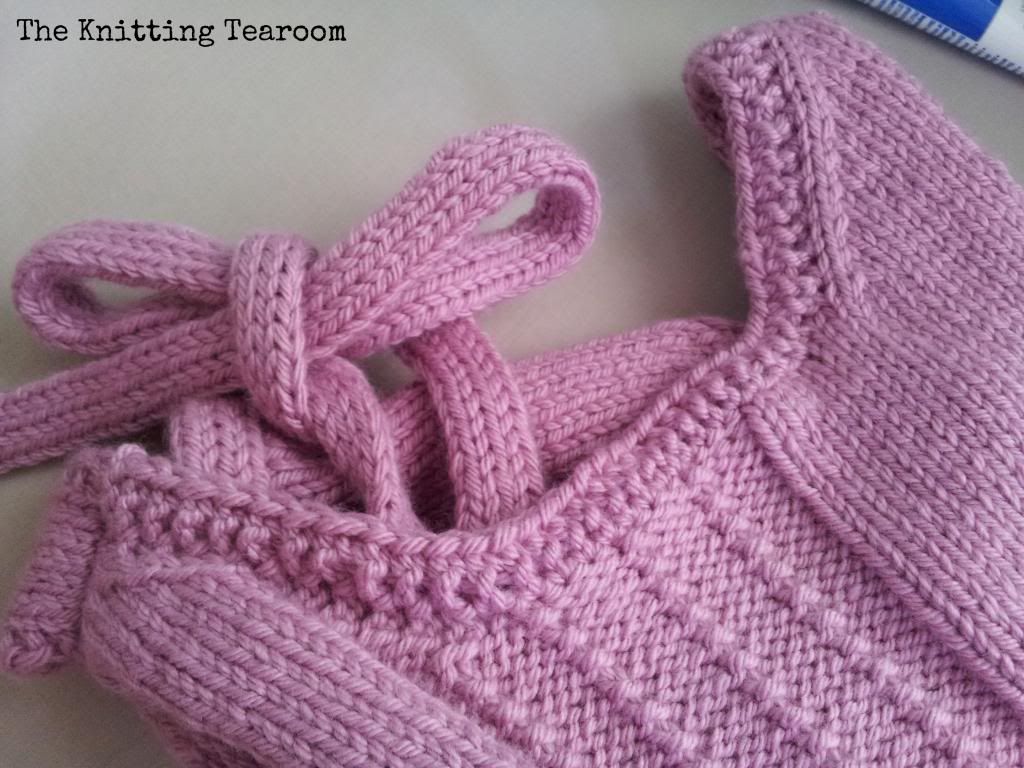I can't remember the last time I walked into a random restaurant for a proper sit-down meal without having read up on any reviews prior. I had zero expectations and only the barest inkling of the price point. Thus, this restaurant review will run slightly in reverse, in terms of my usual format. It was on the first day of my recent Melbourne trip that I stumbled across Pei Modern.
I stayed by myself at the Sofitel hotel on Collins Street on the first night. While the hotel itself is quite nice (once you eventually find your way in) the format of the entrance is quite strange and confusing. Basically, there is no main entrance. I ended up accessing the escalators to go up to the hotel lobby by walking around the bend behind the Collins Place building, which is where Pei Modern is hidden. At a glance, it looked pretty closed off, and I couldn't see inside it, so it didn't appeal to me at all. Like the Sofitel, the entrance to this eatery is also not immediately obvious. The name sounds Chinese, so I assumed it served modern Chinese cuisine.
So how did I end up going there? Well, by the time I got back to the hotel that night, it was already approaching 9pm, and the restaurant I wanted to go to, Maha Bar and Grill, closes its doors at 10pm. Since it was already late, I just wanted to go somewhere for a quick dinner; for just a main and a dessert. Upon enquiring about the opening hours and table availability at the hotel's restaurant, No35, at the hotel reception, the person on duty, noting that I was just eating by myself, kindly advised me that since said restaurant was bordering on fine-dining, and menu prices would reflect this (he estimated $50 for main and dessert), he could recommend some good casual-dining places close by that are more reasonably priced for a solo dinner. He mentioned an Italian and a Mexican eatery, but I opted for his first suggestion of the Pei Modern bistro, since it was just downstairs, and he said it was modern French cuisine. I figured that since the receptionist is French, he must know good French food from bad, right?
Before I launch into my review of the food, let me clarify first up that the food at Pei Modern is not French at all, but very much modern Australian; although, I guess, the food may well be vaguely French-inspired. The price point of the menu items, while not extortionately high, are also not the 'casual-dining' prices I was led to expect. In fact, looking at the No35 menu now, online, the prices are comparable. Despite the inaccurate information I was given, I have to thank that receptionist for introducing me to this bistro.
The interior:
I was shown to the bar while I waited for a table in the dining room. The bar area is partially closed off from the dining area by a wooden partition, but there's also a few tables with tall chairs here that you can choose to sit at. Here, I ordered a mocktail composed of orange, apple and lime juice, watermelon soda, and mint ($9). I've never had watermelon soda before, and having a carbonated mocktail was definitely a bit different. It was refreshing and tasted quite nice. My table in the next room was ready in a matter of minutes, and I was seated in a cozy corner with comfortable padded seating, the open kitchen to my left. Apart from this type of seating along the wall of this side of the room, the rest of the furniture consisted of white, plastic chairs and bare four-legged wooden tables with natural or white-coloured table-top surfaces. Paired with dark-coloured walls and ceiling, wooden accents and dim lighting, the bistro takes on a simple yet contemporary and chic look. The atmosphere is casual and relaxed, and guests can freely chatter loudly.
The service:
I was served by 2 different waitresses during my whole sitting, and both were very friendly and knowledgeable about the dishes on the menu. It's great to be made to feel welcome by waitstaff at a restaurant. It's the way it should be in the whole of the hospitality industry, really, but unfortunately, I've found this to not always the case.
The food:
The house-made sourdough bread was served in a rustic cloth bag, with some salted butter alongside. There's nothing usually much to say about bread and butter, but I remember this particular butter being much creamier (in a good way, of course) than the usual.
The waitress recommended most of the items on the menu, so I ended up choosing the wild barramundi with diamond clams and green tomatoes ($38). This dish was lovely and delicate, dressed in a simple clear broth, and garnished with micro herbs and tiny white flowers. The absence of a rich, creamy sauce allowed the fresh flavours of the food to take centre-stage. The barramundi was nicely cooked and the skin was wonderfully crispy. The clams were nice, but few; I think there were about three on the plate. The most interesting element in this dish, for me, was the samphire, which I've never eaten before. A fleshy stem-like plant that resembles super skinny baby asparagus, the samphire is a coastal succulent that grows along the Victorian coastline, as well as on that of Scotland and other parts of the UK. Overall, I loved this dish. I think the last time I was this impressed by a fish dish was when I had a swordfish dish for lunch at Gary Mehigan's Fenix, which is also located in Melbourne.
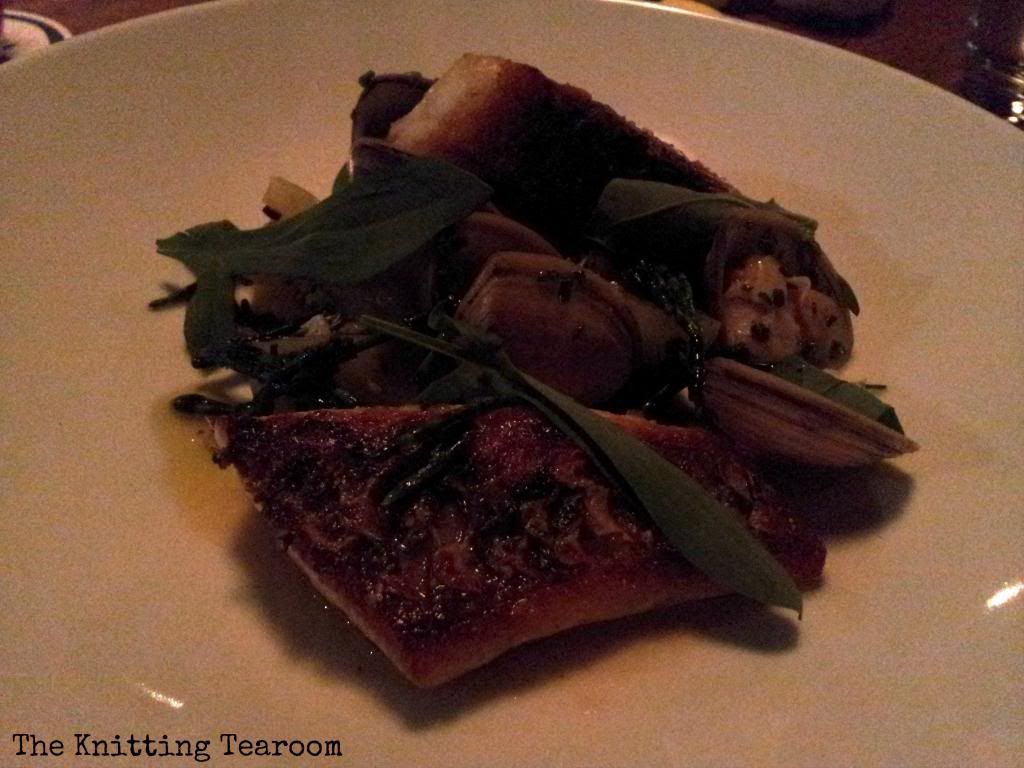 |
Main: Wild Barramundi, Clams, Samphire and Green Tomato
|
For dessert, I was tempted to get the stuffed caramelised tomato with star anise ice-cream, because it sounded interesting and is the bistro's signature dessert dish, according to the waitress. I don't particularly like liquorice-y flavours or raisins, with which the tomato is stuffed, so I chose, instead, the buttermilk and banana ice-cream with hazelnut praline, chocolate ganache and chocolate tuile ($15).
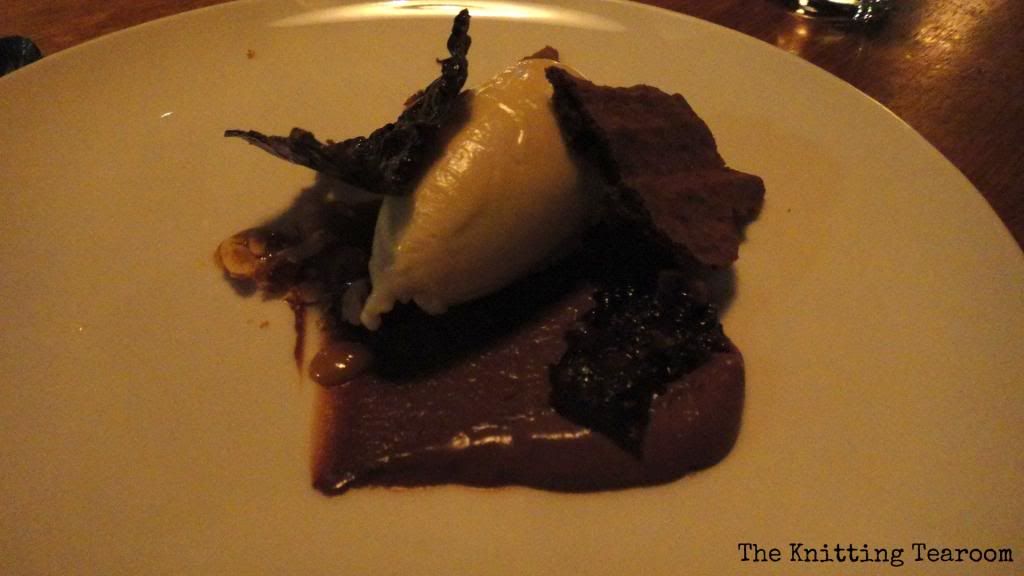 |
| Dessert: Buttermilk and banana ice-cream, hazelnut praline, chocolate ganache, chocolate tuile |
I didn't mind the ice-cream; it tasted of ripe bananas, like its name suggests. However, I was not a big fan of everything else on the plate. The chocolate tuile had a burnt taste, and I wish the hazelnuts were just toasted and not pralinéd, so that there wouldn't be too much of the hard crunch element present. There was also a flat, rectangular piece with a cake-like texture, resembling a softened chocolate biscuit. I'm not too sure what it's supposed to be, but whatever it was, the dish could have done without it.
Despite the fact that I didn't love my dessert, I was still overall well pleased with my dining experience here. I will not lie; the serving sizes for both main and dessert are small, and may not appear to be worth the cost for those with very big appetites, but I find it is perfect for someone like me with a small stomach. For those belonging to the first category, I would definitely recommend ordering an entrée as well, to ensure you won't leave hungry. Will I go back again? Very likely.
Now, the interesting thing is that when I was Googling this restaurant online, just before writing up this review, I found out that my serendipitous discovery, contrary to my belief, is not at all just a random hidden bistro waiting to be discovered, but one opened just last year by Mark Best (owner of renowned Sydney restaurant, Marque), Peter Bartholomew and David Mackintosh (both from my favourite Melbourne Spanish tapas restaurant, MoVida), and which has been awarded the title of 'Best New Restaurant' by this year's Good Food Guide. The Pei kitchen is headed by Matt Germanchis, who has worked at MoVida, and the bistro is managed by Ainslie Lubbock, who is from Attica, a highly rated fine-dining restaurant in Melbourne.
It's probably a good thing actually that I didn't know Pei Modern is owned by Mark Best, because I probably would have avoided dining there. I haven't written up a review for Marque yet, which I dined at last year, but in summary, the food was okay, but my whole experience there was ruined by the snooty attitude of one of the waiters there that served us. When he asked whether our party wanted still or sparkling water and we replied that still, plain water would be fine, he didn't bother hiding an arched expression on his face, and said in a condescending tone that the restaurant filters and carbonates its own water, so regardless of which we choose, we would still have to pay $4 per person. Basically, he was suggesting, and assuming, that we had chosen what we had, because we were being cheap, and his attitude made it clear that he thought we were somehow unworthy of his service and of his even feigning a genuine smile.
This was not the first time I've met waiters who think they can have a high and mighty air about them, just because the restaurant they work at is fine-dining or quite popular; however, this is not acceptable, and should not be accepted by customers, especially those paying good money for the food and service. Thus, I make a point of never revisiting restaurants that give me bad service, especially if the food is not that particularly outstanding. I'm glad that the service at Pei is at the other end of the spectrum from what I received at Marque.
The last point of interest I discovered is in the reasoning behind the Asian-sounding restaurant name. (Clue: The bistro is at the 'Paris end' of Collins Street.) If you're thinking about the Louvre pyramid in Paris, you would be correct: the name is a nod to the Chinese-born architect, I.M. Pei. Unbeknownst to me, until I read the hotel newsletter in my Sofitel hotel room, his architecture firm, Pei Cobb Freed and Partners, actually designed the Collins Place building (completed in 1981), which is incidentally where Pei Modern resides. Interesting, non?


